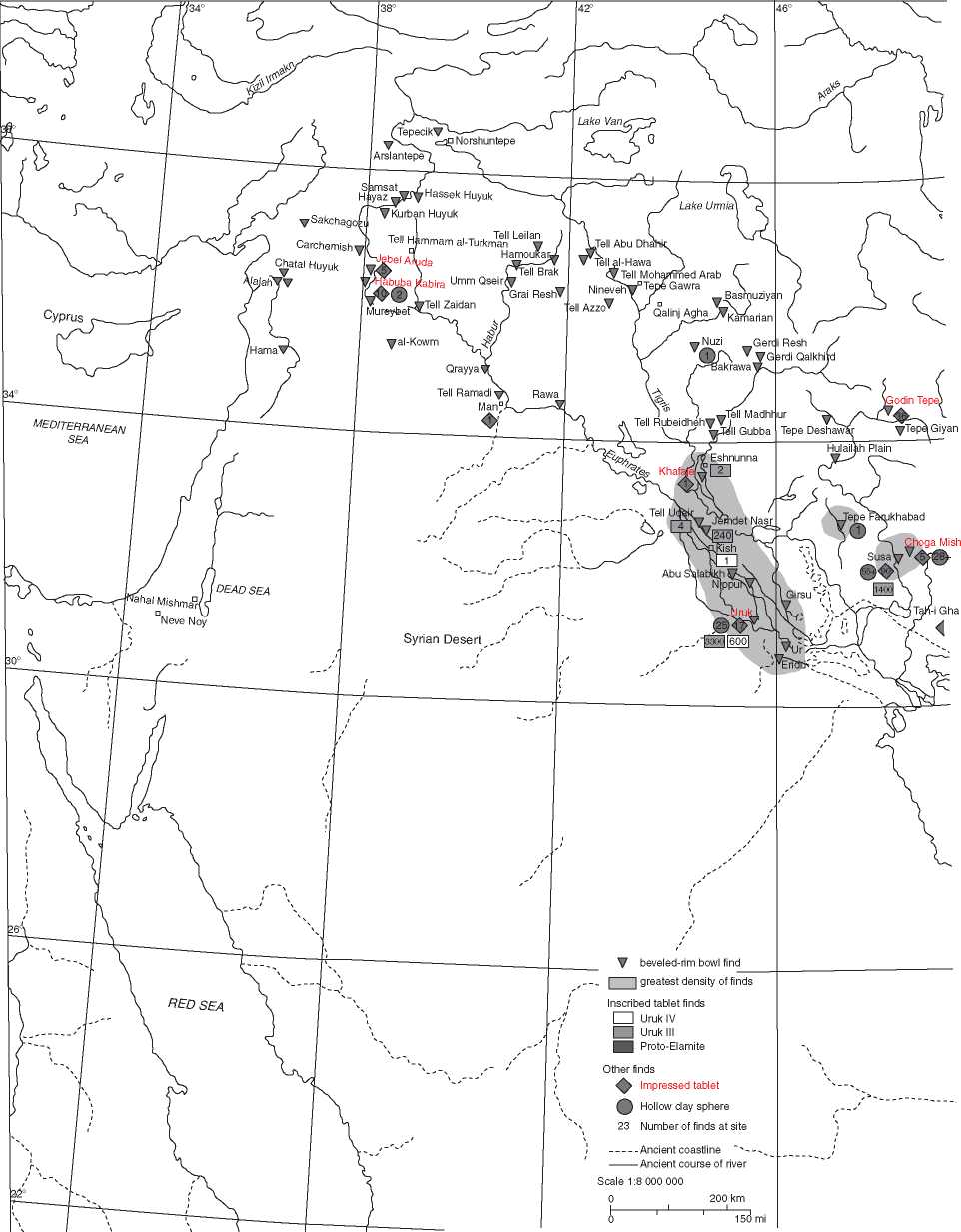The 300 archaic impressed tablets, dated 32003000 BC, have been recovered over a wide geographic area. (Figure 6) Some were excavated in Uruk and Khafajah present-day Iraq, and others in Godin Tepe, near Hamadan, Iran, and Susa and Choga Mish, in Elam, present-day Iran, as well as Habuba Kabira and

Tepe Qabr
Figure 6 Map. Distribution of the impressed tablets.
Jebel Aruda, Syria. It is quite remarkable that, with exceedingly rare exceptions, the impressed texts shared exactly the same tablet format and sign layout. This suggests that scribes of the Uruk metropolis established precise rules concerning the direction of the script and the organization of signs on a tablet which they imposed on the subject states of Elam and Syria. With the collapse of Uruk, writing disappeared from both Elam and Syria.
After a hiatus of one century Elam created its own script, proto-Elamite, which owed only the numeral system to the archaic Mesopotamian tablets. Egypt followed, borrowing the Mesopotamian phonetic rebus system. But the analytical processes involved in writing and reading must have felt threatening to the Iranian Plateau, Anatolia, and the Levantine cultures who remained nonliterate. In fact literacy was adopted by few select cultures in the third millennium BC, among which was the Indus Valley Civilization, which devised a script about 2500 BC. Crete and the Aegean countries used linear A and B between 2200-1300 BC.




 World History
World History









